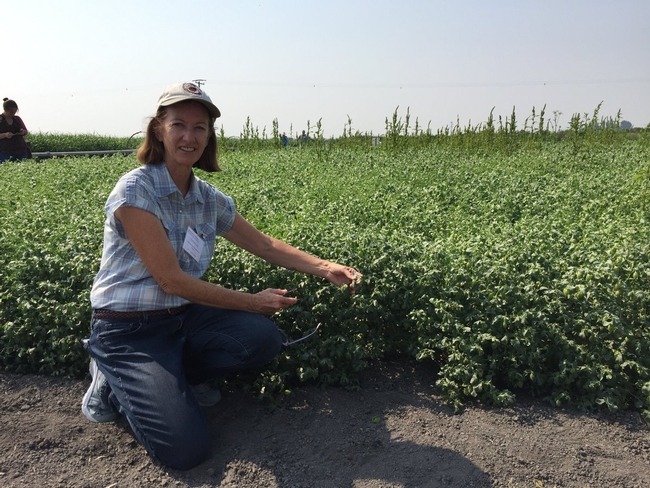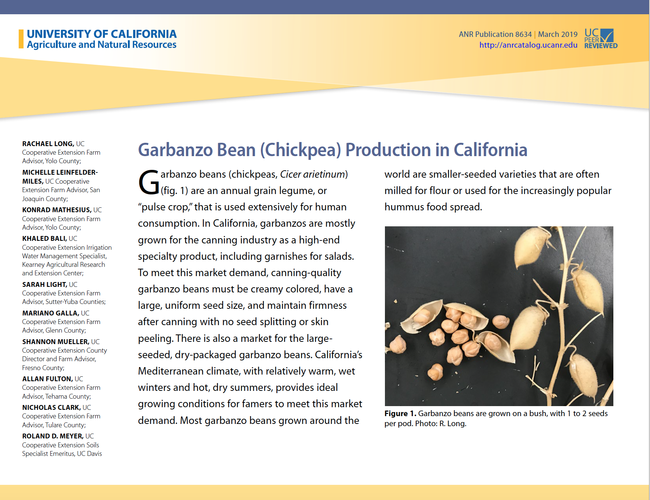Try topping your salads with some tasty garbanzo beans this summer. Not only are they a healthful source of protein, vitamins and minerals, but the ‘green' legumes are produced in California with a small environmental footprint!
California farmers grow about 10,000 acres of garbanzo beans, mostly for the canning market.
“We have the right growing conditions, including cool, wet winters and hot, dry summers, to produce high-quality, large, creamy-white garbanzo beans for high-end markets, like salad bars,” says Rachael Long, UC Cooperative Extension farm advisor for Sacramento, Solano and Yolo counties. “Other areas, such as Washington State, grow a smaller garbanzo bean destined for processing, like hummus, a creamy vegetable spread.”
Garbanzos, also called chickpeas, are originally from the Middle East, where they have been farmed since ancient times. In California, their heritage dates back to the Spanish Mission era. California garbanzo beans are grown in the winter time, minimizing water use. The nitrogen-fixing legumes supply their own nitrogen and require few pesticides for production as the plants secrete acids that ward off insect pests.
To assist farmers in production practices, Long led a team of researchers to produce a new 2019 Garbanzo (chickpea) production manual for the dry bean industry in California.
“This is a great resource for farmers and the industry,” says Nathan Sano, manager for the California Dry Bean Advisory Board, about the publication, which covers garbanzo production from seed selection to harvesting and markets.
The manual identifies garbanzo varieties that have pest and disease resistance. Nutrient management information helps growers comply with regulations for protecting groundwater from nitrate. The irrigation section provides tables on water needs for crops grown in different areas of California, helping to conserve water.
“Our UC ANR Grain-Legume workgroup started this production manual back in 1992,” Long said. “I'm thankful for a strong team and grower and industry input and support. I also appreciate the incredible mentoring and reviews of this manual by Roland Meyer, UC Cooperative Extension emeritus soil specialist, and a fantastic editor, UC Cooperative Extension agronomy specialist Dan Putnam, to make this publication a reality. This was a big group effort, and I appreciate everyone's contributions to make this a valuable resource for the California dry bean industry.”
The California garbanzo bean production manual is available for free online at https://anrcatalog.ucanr.edu/Details.aspx?itemNo=8634.
In addition to Long and Meyer, co-authors include UC Cooperative Extension farm advisors Michelle Leinfelder-Miles, Konrad Mathesius, Sarah Light, Mariano Galla, Shannon Mueller, Allan Fulton and Nick Clark, and UC Cooperative Extension irrigation specialist Khaled Bali.

